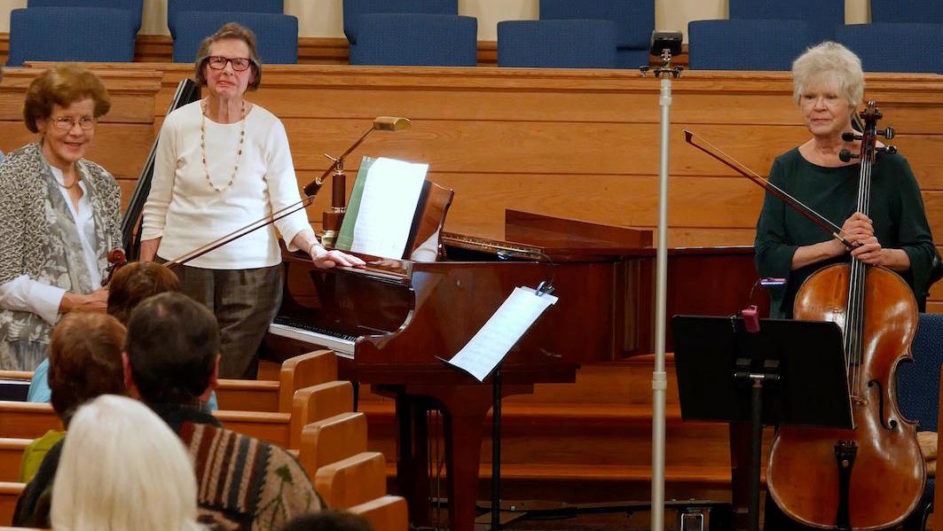Sunday evening, the Oak Ridge Civic Music Association presented its January Coffee Concert, one of a series of free concerts that present local musicians playing great music, usually from the classical repertoire, at First Presbyterian Church in Oak Ridge.
As a rule, these are delightful concerts with a range of performances from competent, to good, to very good. But that these concerts occur in the first place is more important than whether or not the performances measure up to recordings of the music listeners may have at home.
Much of the music composed in the 17th through early 19th centuries, by even the greatest of classical composers, was written to be played by amateur performers for their own pleasure and the enjoyment of their friends and family.
Mozart, Beethoven, Schubert and the other composers of the period whose names immediately come to mind depended on income from the sale of their music to amateur musicians.
Unfortunately, since the age of big concert halls, professional musicians and supposedly flawless recordings came into being, home gatherings where people enjoyed music in the tradition of the composers’ times rarely occur anymore.
So when the audience of 30 or so gathered to hear the musicians of The Somerset Trio play music of Brahms, Bach and Beethoven Sunday evening, everyone there was participating in a tradition that helped the music come to life in its beginning.

Violinist Jenifer van Tol and pianist Karen Yarbro, members of The Somerset Trio, playing Bach in Oak Ridge Sunday night (Photo by Harold Duckett)
The three musicians of The Somerset Trio are all retirees. Violinist Jenifer van Tol retired from 27 years of teaching string orchestra in the Oak Ridge school system. Cellist Kathy Bohstedt was a member of the philosophy faculty at the University of Tennessee for 34 years. Pianist Karen Yarbro was the choir director, pianist and organist at Tennessee Valley Unitarian Universalist Church in Knoxville.
None of the three, with the exception of Yarbro, on occasion, is accustomed to being a soloist. So the first movement of Johannes Brahms’ “Cello Sonata in E Minor,” Op. 38, marked “Allegro non troppo,” played by Bohstedt and Yarbro, had little moments when some of the cello notes needed little ramps to slide up to the top of them and other things when nervousness invades musicians’ fingers. None of that mattered because the pleasure of listening from only a few feet away added to the lovely singing passages and the changes in dynamics and intensity, along with the interchanges when the cello and piano switched roles.
In van Tol and Yarbro’s playing of the first two movements of J.S. Bach’s “Sonata No. 3 in E Major, for Obbligato Harpsichord and Violin,” BWV 1016, the first movement, a slow adagio, has similar sounds. But the faster “Allegro,” second movement, kept things at a pace where there wasn’t time for anything but getting the pitch right. As she would when playing in an orchestra, van Tol arranged herself in a familiar position of facing to the side of the audience, instead of looking directly at anyone.
As in almost all of chamber music, Yarbro carried the heaviest musical load, which didn’t give her fingers time to turn the pages of the music. That’s why when there’s a pianist in trios it’s called a piano trio and in duets the piano is named as an equal partner with the solo instrument.
When it came time for the big work of the evening, played by the full trio, everything changed. Beethoven’s “Piano Trio in D Major,” Op. 70, No. 1, known as “The Ghost,” was a delight from beginning to end. The trio gets its name from the eerie second movement.
Played all together, each of them was in her most comfortable position of being part of an ensemble. It showed.
Then, to celebrate a little, the trio played Brazilian composer Antonio Carlos Jobim’s jazzy and joyful “Agua de Beber” as an encore.

